Northport
Oak Hall was built in the twilight of of Northport’s Gilded Age by a man who would go on to establish the legal foundation for the modern summer colony of Bayside.
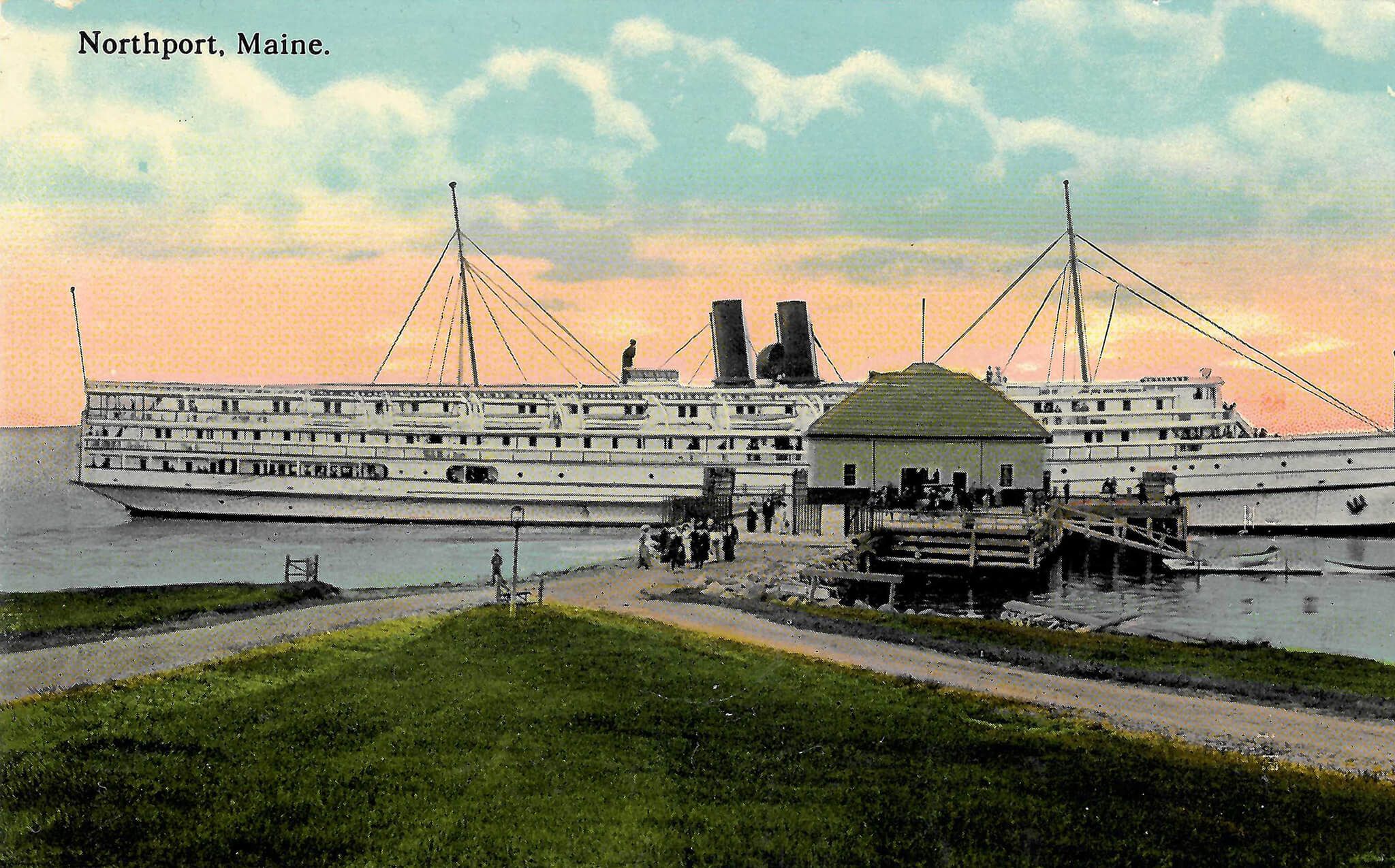
Northport, in Waldo County, Maine lies on the west side of Penobscot Bay, and adjoins Belfast on the south and Lincolnville on the south-west. Northport is home to several small enclaves — among them Bayside, Saturday Cove, and Temple Heights
The town was incorporated in 1796, and within 100 years it had become a favorite watering hole for the steamer crowd up from Portland, Boston and other points further south. During the summer months the town’s daily population would swell to just under 10,000 guests who would spend the day promenading through the campgrounds and taking in the salubrious climate.
It was during this heyday of the Gilded Age that Ira M. Cobe would become a regular visitor during his years in Boston. On one such trip he met and fell in love with Annie E. Watts of Belfast, who he would go on to marry in 1892. It was this romance that gave purchase to the dream that would twenty years later become Oak Hall.
Bayside
Just north of Oak Hall lies the small summer colony of Bayside. Its 300 charming Victorian cottages hug the shore of Penobscot Bay for almost three miles.
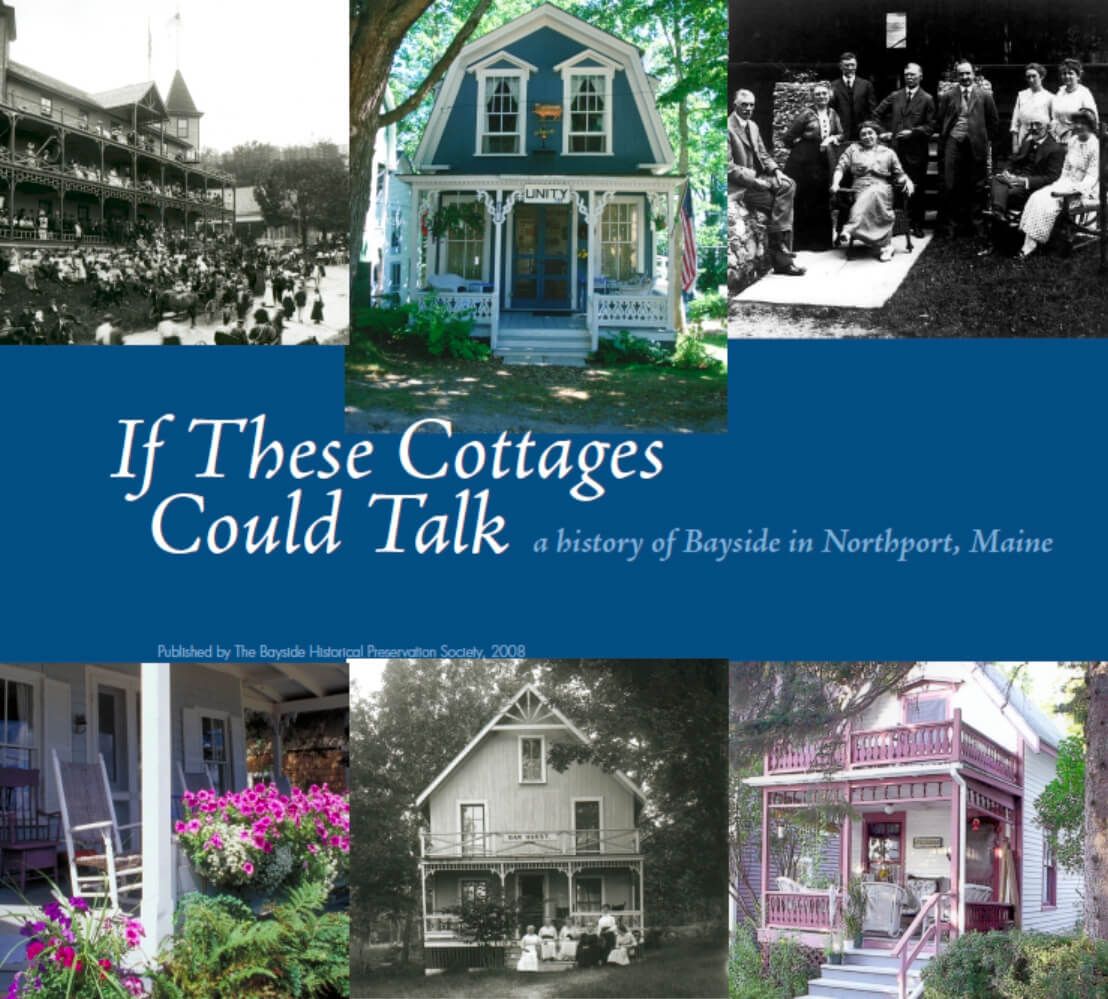
Bayside began as a Methodist Church campground in 1849. That year, a committee from the Maine Conference of Churches purchased twenty-five acres where churchmen and farmers could pitch their tents among the trees for one week and worship God with sermons, songs, and old-fashioned religious fervor. In 1873, the Northport Wesleyan Grove Camp Meeting Association incorporated and purchased thirteen more acres.
Church societies from local towns built large Society Cottages – wooden, barn-like structures with double front doors, big front rooms, tiny upstairs bedrooms, rows of small cupboards along dining room walls to hold each family’s tableware, and a large signboard above the front door bearing the name of the community from which the church members came: Belfast, Brewer, Orrington, Thomaston, South Thomaston, Rockland, Rockport, Camden, Warren, Monroe, Union, Morrell, Bucksport, Orono, Bangor, and many more.
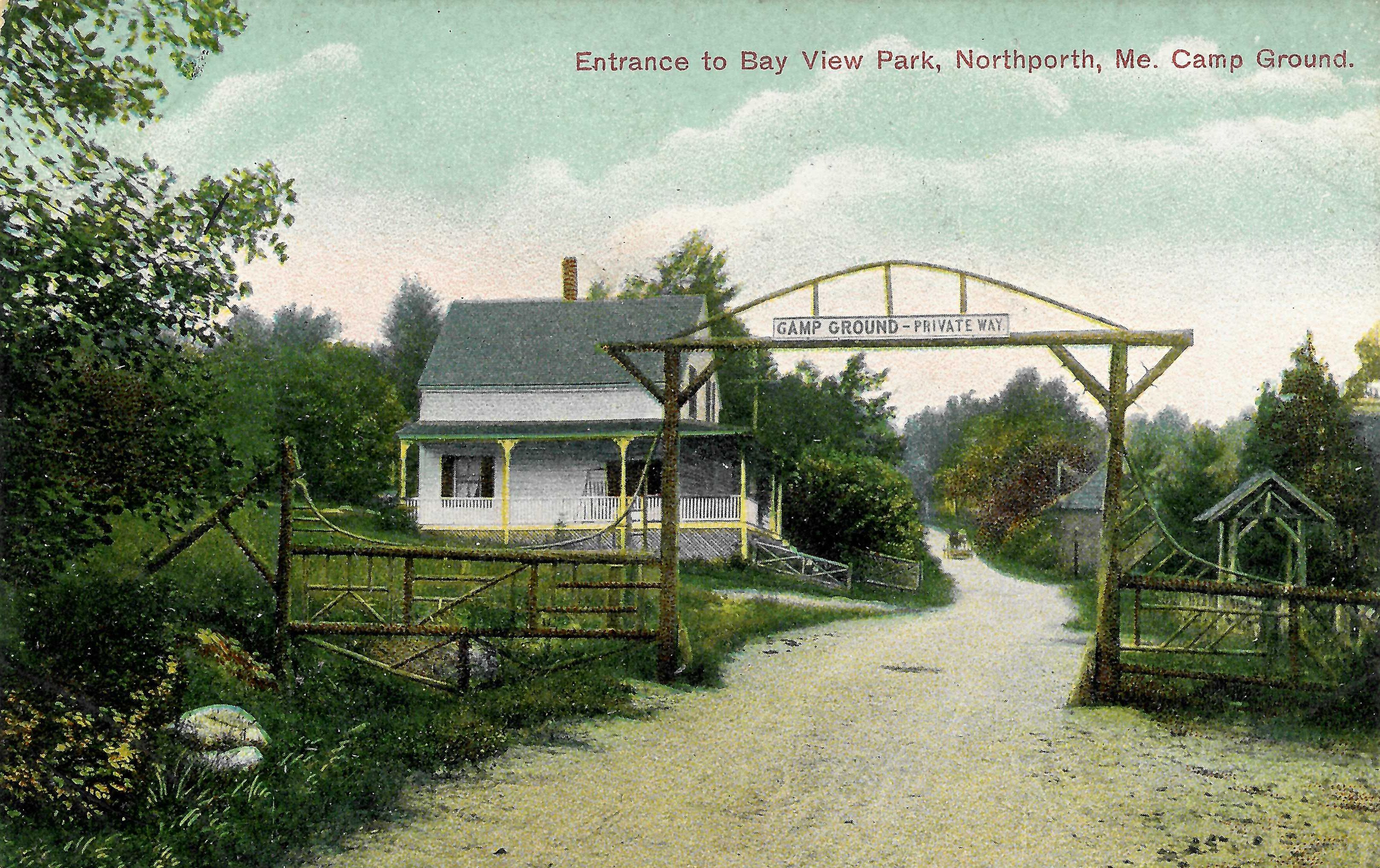
Small private cottages with fancy carved gingerbread trim and quaint names were going up everywhere. They are similar to the small family cottages built around the Methodist campground at Oak Bluffs on Martha’s Vineyard and those at Chautauqua, New York, which was also started by Methodists.
A fine wharf and the Wesleyan Hotel attracted steamers from Boston, Rockland, and Bangor, bringing folks who were changing the religious campground into a summer resort. Roads, sewers, and water came to the little community, along with two grocery stores, a police force, and a professional photographer. A large auditorium was built as a place for sermons, revivals and educational speakers.
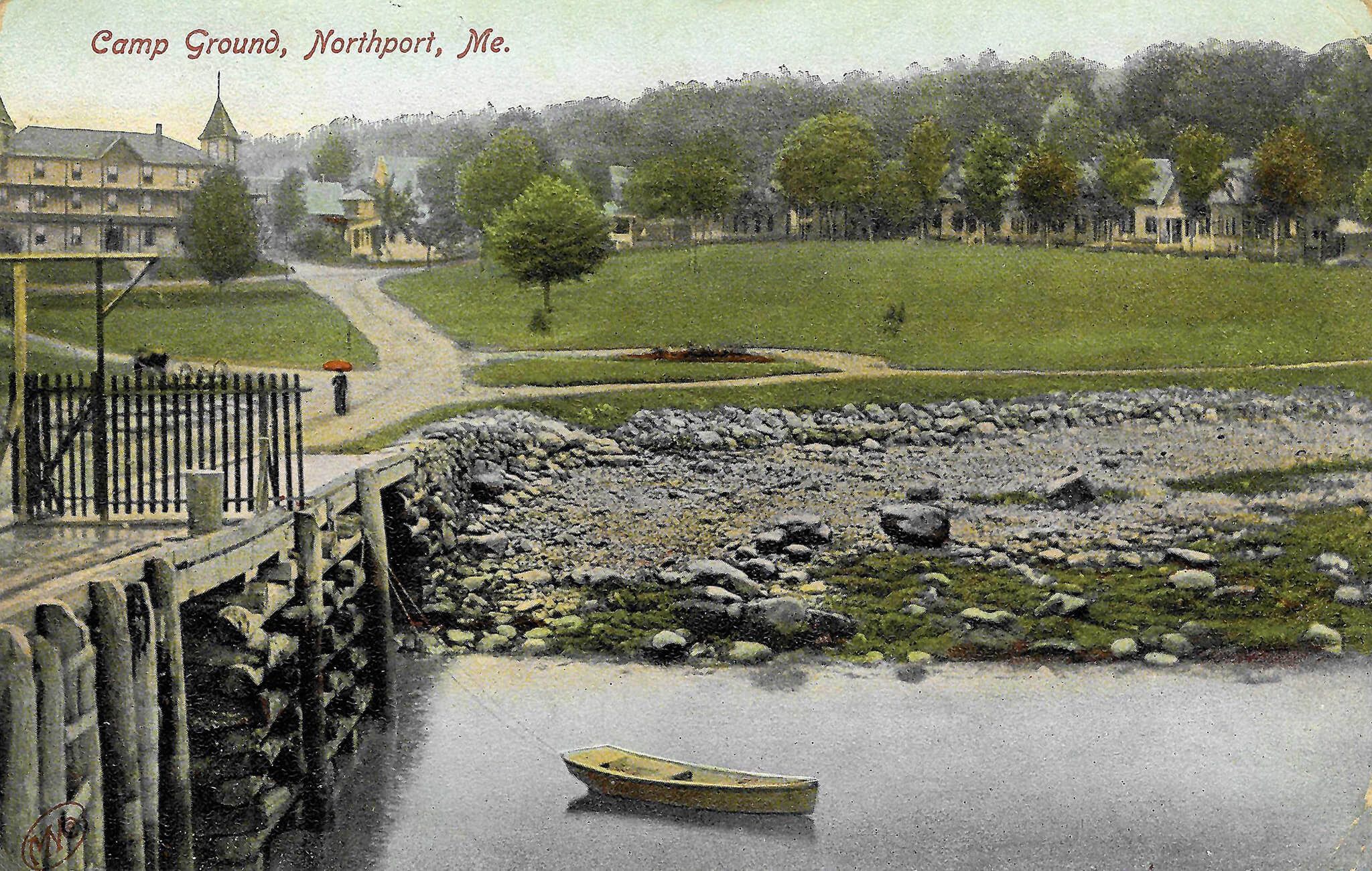
In the Gay Nineties, the Wesleyan Hotel burned and the larger Northport Hotel took its place. The Bangor Band gave weekly concerts in front of the hotel and there was dancing inside. There were clam bakes, picnics, hay rides, firemen’s musters, baseball games, and excursions.
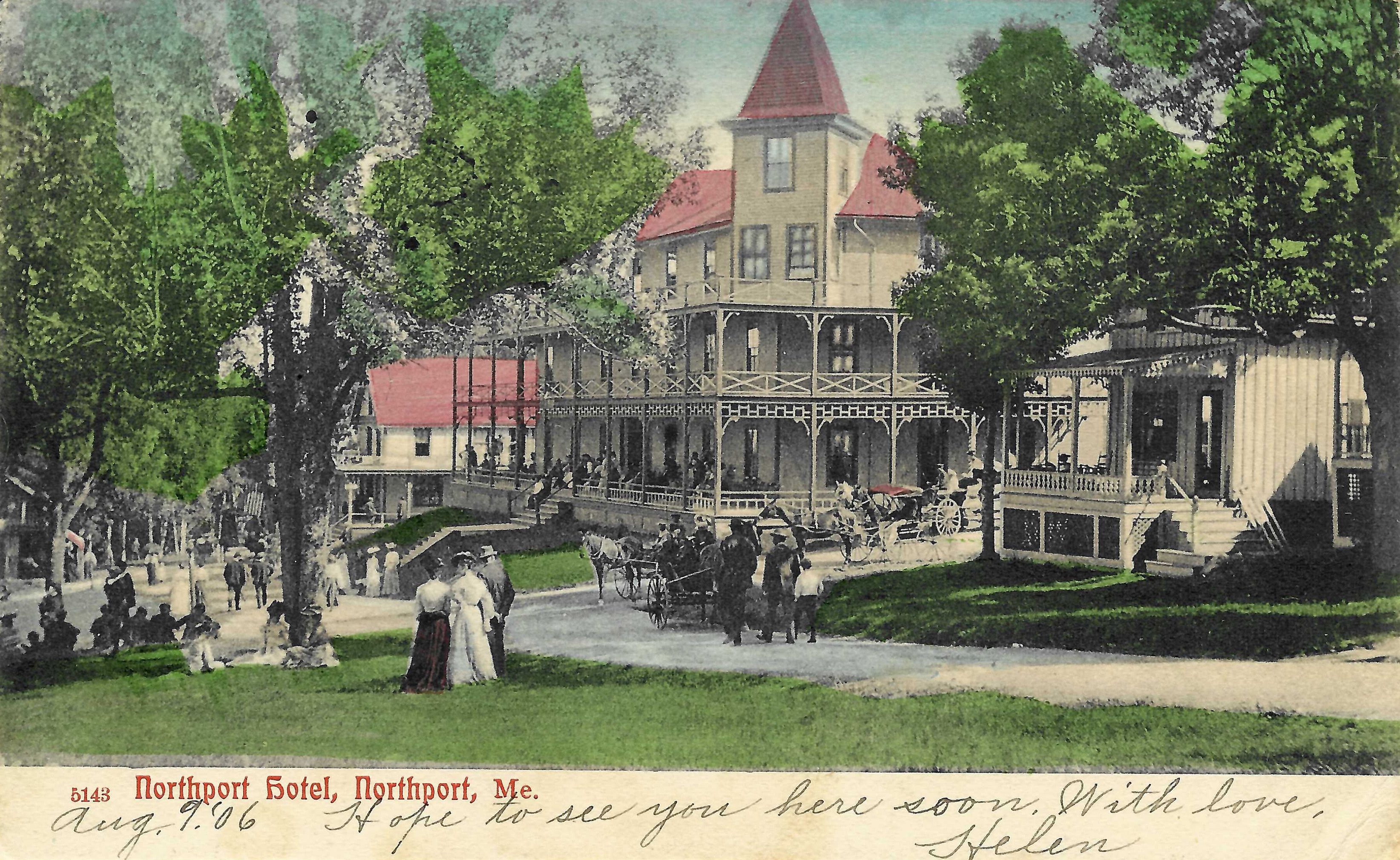
In 1915, Ira Cobe led the effort to incorporate the Northport Village Corporation to administer community affairs and distribute tax funds. In 1916, Ira Cobe was the prime mover in the establishment of the Northport Golf Club, a nine-hole course, and the Northport Country Club, where the clubhouse sponsored musical performances and dances throughout the summer.
Temple Heights
South of Bayside, high above the Shore Road, perches the Spiritualist camp called Temple Heights.
In 1883, a company of Maine Spiritualists formed the Temple Heights Association to bring together spiritualists, clairvoyants, and mediums from all over the country. A lodge and individual cottages were built on the hill above the beach, and finally a wharf and large auditorium were added.
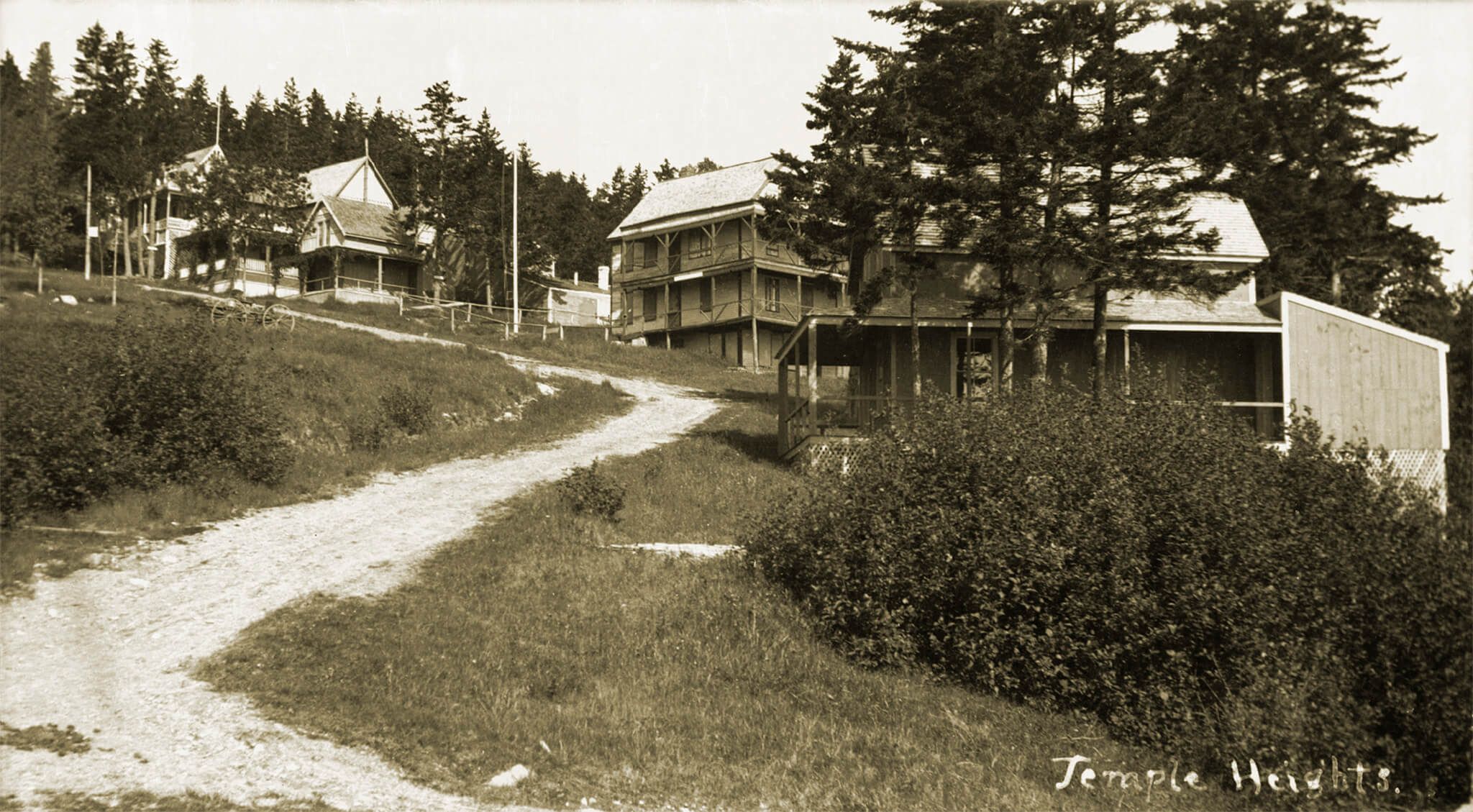
Spiritualism was a popular pastime during the first half of the twentieth century. Today, the auditorium is still used for Sunday afternoon and weeknight church services; and the lodge is used for classes, private readings, and message circles. Each summer, well-known mediums come from many parts of the country to spend a week exploring the science of parapsychology. Temple Heights is another surprising vestige of the past on the coast of Maine.